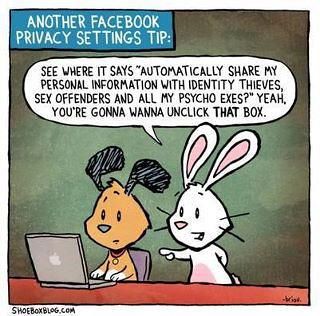
Last month, Facebook launched a major overhaul in the privacy settings. The changes, more than a dozen in all, were in two key areas: privacy changes to user profiles and changes to how users share content. Now with the changes to the timeline, actions, and open graph announced on Thursday, I’ve been hearing a lot of concerns, fears, and reports from nonprofit folks that their audiences are upset.
The news ticker on the upper right that is streaming all your friends updates in real time. While I found it annoying and looked for a way to turn it off, I’m hearing from that their networks are confusing – thinking that those updates are public – and asking their friends to “unsubscribe” them. Scoble observed this pattern and offered some advice on how to reduce the clutter.
Jesse Stay posted this in his Facebook update:
Dear friends, if you don’t want your comments appearing in my ticker, please unfriend me. Don’t friend people who you don’t want to see your comments in the ticker on the right! This ensures the best experience for everyone.
For everyone else, enable the subscribe button so they can still get your updates, but not affect the ticker. BTW, if you unfriend me, and you have subscriptions turned on, I will still remain subscribed to your updates, but I won’t see your comments in my ticker! (Although, as it has always been, I will still see them in my news feed, btw)
All this copying of status updates asking people to unsubscribe from comments is silly.
Some step-by-steps.
There is a larger issue here -the tension between privacy and publicness as Jeff Jarvis calls it. In fact, that is the topic of his new book, “Private Parts: How Sharing in the Digital Age Can Improve Work and Life.” We hear more about the fears related to privacy, rather than the benefits. He isn’t saying that privacy isn’t important, but points out that when a new technology comes along – we only hear about the fears. He says that publicness is important because it builds relationships – and that helps with movements. (A lot of what we talked about in the Networked Nonprofit)
I have been doing mini-trainings on privacy for those are concerned about privacy, but not technologically savvy. These have been a walk through the privacy settings of different social networks, particularly Facebook so that people understand the degrees of choices – from totally opened to totally closed online (the latter isn’t really totally possible online).
My advice has been general common sense:
1.) Don’t accept friend requests from complete strangers
2.) Understand your privacy settings and make choices about what you want to share – and it isn’t going to black and white, probably shades of grade based on your relationships with people – and the type of content you are sharing. We haven’t had to think about this in the past.
If you are worried about what is being shared on the news ticker, here are some step-by-steps from Mari Smith to get better control of that. Also read this post.
3.) Think about the information you are sharing online and who might be reading it – but not from a place of fear or “something bad will happen.” Also think about opportunities and benefits.
What are your thoughts about the tension between privacy and publicness? What is your personal approach to sharing information on social networks? What are people thinking or saying in your organization?
Update: Some more thoughts about privacy and Facebook from Mari Smith, including a link to a this post: Why Timeline Changes Everything.
